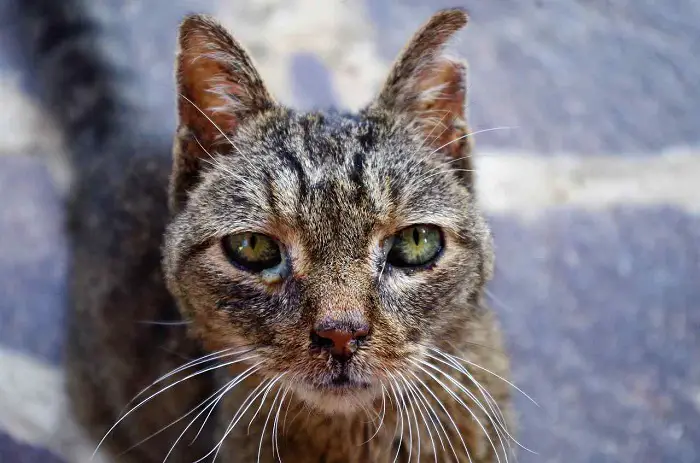Rhinitis is the inflammation of the nasal cavity. Rhinitis in Cats or stuffy noses is relatively common in pet cats. The condition is very uncomfortable for your cats. Feline rhinitis causes a runny nose and mucous discharge and, in prolonged cases, causes bacterial infection.
Causes of Feline Rhinitis
The leading causes of feline rhinitis are cat flu or upper respiratory infection (URI). The other causes are:
- Viral rhinitis (Feline calicivirus, Feline Herpesvirus, Feline Immunodeficiency virus)
- Secondary bacterial infection.
- Mycoplasma felis.
- Chlamydia psittaci.
- Mycoplasma gatae.
- Bordetella bronchiseptica.
- Certain fungal infections (Nasal cryptococcus).
- Cancer or neoplastic growth in the nasal cavity hampers normal function (lymphoma and squamous cell carcinoma).
- Cat allergies.
- Dental diseases and deformities.
- Foreign bodies in the nasal cavity.
- Structural deformity or congenital abnormality (cleft palate).
- Nasal polyp.
- Parasitic infection.
- Abscess in the tooth root.
Chronic rhinitis causes permanent damage to the nasal septum, and recurrent bacterial infection occurs.
Clinical Signs of Feline Rhinitis
The most common clinical signs and symptoms of rhinitis are:
- Sneezing.
- Coughing.
- Abnormality in the face.
- Frequent nasal mucoid discharge.
- Loss of appetite.
- Blockage of the airway (one or both) or stuffy nose.
- Reverse sneezing.
- Gasping or breathing through the mouth.
- Labored breathing.
- Ocular discharge.
- Oral ulcers.
Diagnosis of Feline Rhinitis
The disease can be diagnosed by physical examination, medical history, and diagnostic tests.
- Clinical history.
- Pathognomic clinical signs.
- Rhinoscopy.
- Examination of oral tissue and gum.
- Radiographic examination of the mouth and upper respiratory tract.
- Complete blood count.
- ELISA and CFT for diagnosis of viral infection.
- Bacterial culture.
- PCR.
Treatment of Rhinitis in cats
The treatment of feline rhinitis depends on the underlying causes and severity of clinical signs.
- Use a broad-spectrum antibiotic to prevent secondary bacterial infection.
- Nasal flush with normal saline to open the airways.
- Give intravenous saline and glucose to provide nutritional and fluid support.
- You can give corticosteroids for unknown causes.
- You can give antifungal drops for fungal infections.
- You may give antihistamine drugs in case of allergies or sneezing.
The home remedies for rhinitis are:
- Keep the cat in a warm and clean room.
- Give nebulization.
- Give lukewarm water to drink.
- Clean the airways and mucous with soft clothes or cotton.
- Provide soft and warm food.
Prevention of Feline Rhinitis
The preventive measures for rhinitis that you follow for your lovely cats are:
- Vaccination against viral diseases that causes rhinitis.
- Reduce the predisposing causes.
- Maintain a healthy environment.
- Isolation of sick cats from healthy ones.
- Proper treatment and management of sick cats.
Concluding Remarks on Rhinitis in Cats
Rhinitis is common in young and weak cats. The etiology of the disease varies from infectious and non-infectious agents. The prognosis of the disease is favorable during early treatment. Morbidity is higher than mortality.
In my article, I have discussed most of the points on feline rhinitis that will help you immensely. You can share the information with your friends who have pet cats. If you want to know more about the disease and management of cats, please visit my website.

